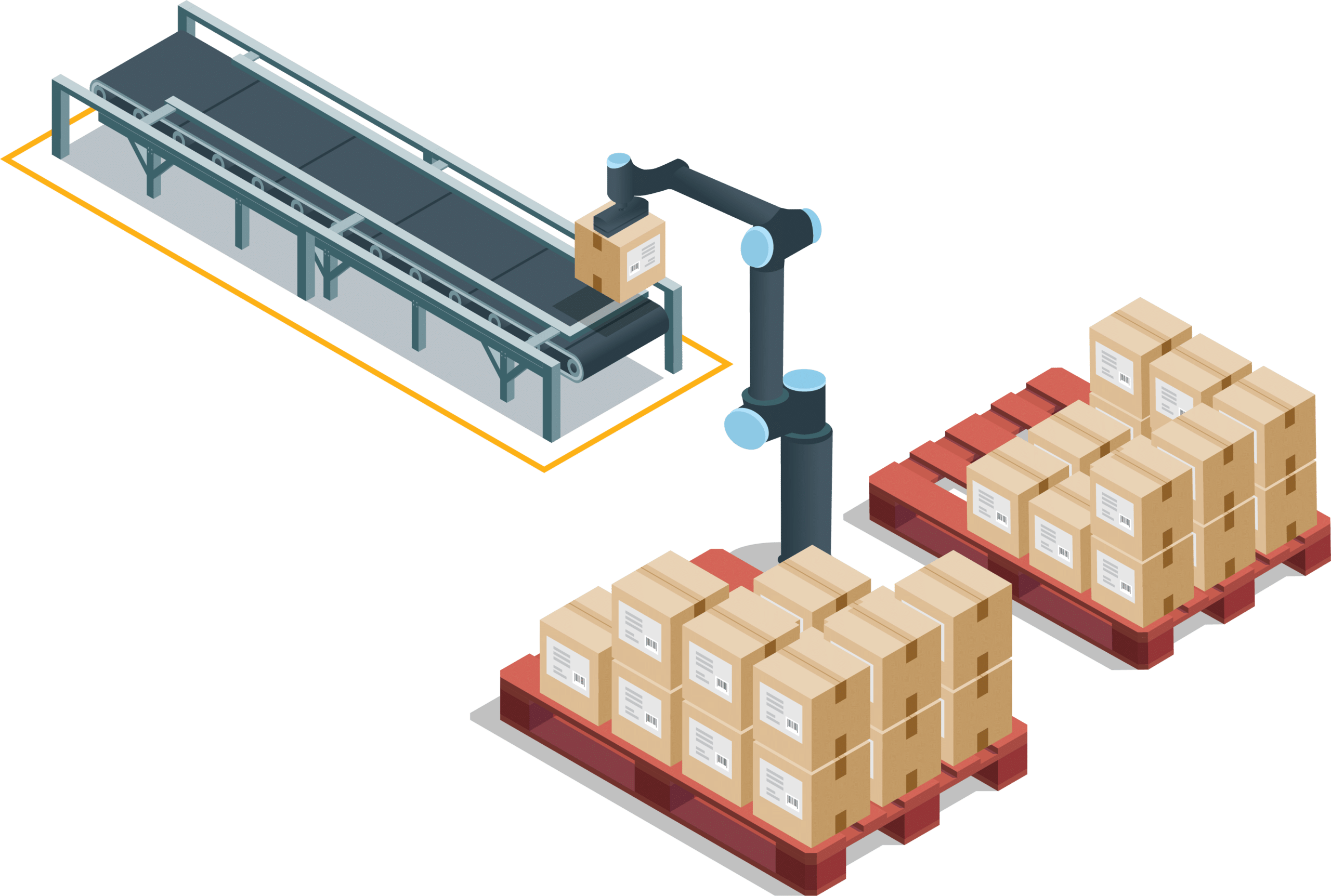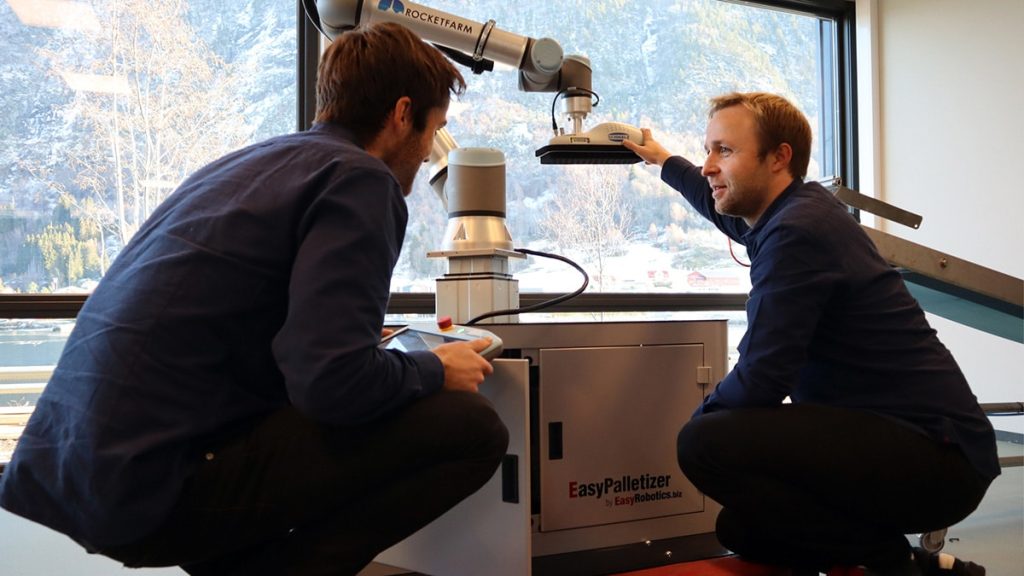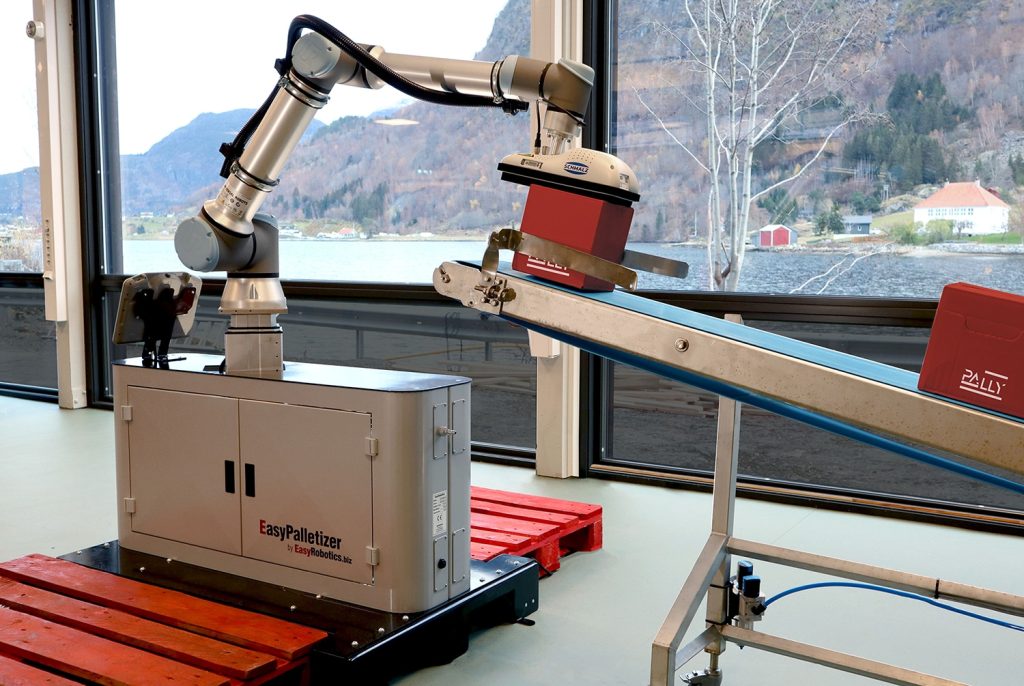What actually is repalletizing? Do you need it in your facility, and how can it help you?

The similarities between palletizing, depalletizing, and repalletizing can be a bit confusing. After reading this article, we aim to provide you with the information you need to make informed decisions and help you better understand repalletizing.
Want to learn more about our depalletizing software, dPally? Check out this article.
This is repalletizing
Repalletizing is an essential process in logistics and warehousing that involves reorganizing products from one pallet to another or adjusting their arrangement on the same type of pallet. This process combines elements of depalletizing, where items are removed from a pallet, and palletizing, where items are arranged on a pallet.
While palletizing involves picking items directly from a conveyor belt, repalletizing adds one more step when picking boxes from the pallet. Repalletizing is not more complicated than palletizing, but because of the position of the boxes, more risks are involved.
Whether palletizing with Pally or repalletizing with rePally, the conveyor needs guides to enable the box to be in the correct pick-up position, every time when palletizing the box. This ensures that the box is always placed in the correct position on the new pallet.
The process is crucial for businesses that need to reconfigure shipments to meet specific requirements or optimize storage and transportation. For example, goods are typically shipped from production facilities on large pallets, but stores may prefer smaller pallets for easier handling and stocking. This is where repalletizing comes into play.
The following video shows rePally in action at our partner WHM’s factory:
Key steps
Key steps in the repalletizing process are:
- Identify incoming patterns: Understand the pattern of boxes on incoming pallets.
- Setup calibration: Make sure pickup and drop-off positions on the conveyor are calibrated accurately, as well as the pallet’s exact position.
- Use MyRobot.cloud for patterns: Implement MRC to create the necessary patterns.
- Execute: Press play and let the automated system handle the rest.
Want to learn more about our palletizing software, Pally? Check out this article.
The role of software in repalletizing
We believe software is crucial in optimizing repalletizing operations by saving time and enhancing precision. It helps build and manage the patterns for incoming and outgoing pallets, automatically calculating positions to meet various customer demands. This is particularly important for efficiently fulfilling diverse requirements.
Rocketfarm’s repalletizing software, rePally, simplifies the creation and management of different pallet patterns. Unlike traditional systems that require vision technology to locate and pick up boxes, rePally can handle these tasks without additional vision hardware, significantly reducing complexity and cost.
“Usually, you need to figure out what the pallets coming in are looking like. Therefore, you need vision. The traditional way is to use vision to see where the pallets are. With rePally, you can do it without vision!”
Roger, Customer Service Manager Rocketfarm AS
Repalletizing offers several key benefits for businesses. To mention some:
- Labor savings: Automating the time-consuming, boring, and repetitive task of repalletizing frees employees for more valuable tasks, improving job satisfaction and productivity.
- Consistency and efficiency: Automation ensures consistent performance and reliability. Machines don’t tire, allowing for sustained high productivity levels.
Challenges with repalletizing
Today, repalletizing is still a relatively new thing in the automation world, and common challenges include finding the correct gripper size and managing vacuum zones to avoid displacing products.
Unlike palletizing, repalletizing requires considering the minimal gripper size needed to handle products without compromising quality.
Overcoming these challenges is key to setting up an effective system.
Repalletizing is highly flexible, provided the patterns are reasonable. It works best with pallets containing a single product type, but using the multi-pick method can significantly boost efficiency. In either case, choosing the right gripper size is crucial to handling different products effectively. Choosing a gripper size that handles the displacement of boxes while not picking the nearby boxes is a key element to a successful solution.
Repalletizing requires a different mindset than palletizing. When you repalletize, you must think, “How small can the gripper be compared to your product and still maintain quality?”. That is the mark you want to hit. As long as you find that mark, there should not be any issues setting it up.
Roger, Customer Service Manager Rocketfarm AS
Safer and more efficient
Repalletizing is set to revolutionize how businesses handle logistics and warehousing needs, providing a more efficient and safer way to manage products.
With advanced software solutions like rePally, businesses can streamline operations, improve worker safety, and boost efficiency.
Understanding and implementing repalletizing can help your facility run more smoothly and meet the ever-changing demands of modern logistics.
Contact us today to learn more about repalletizing solutions and how they can revolutionize your business.



